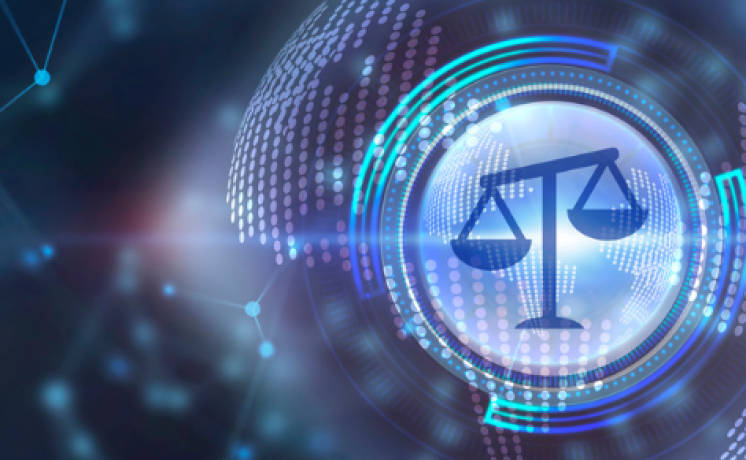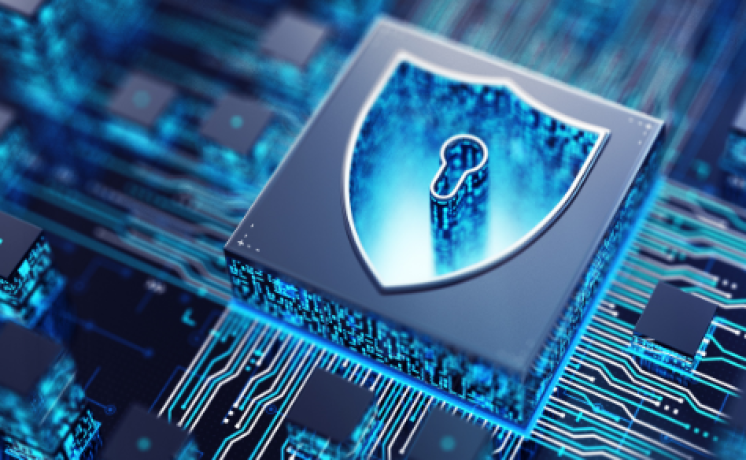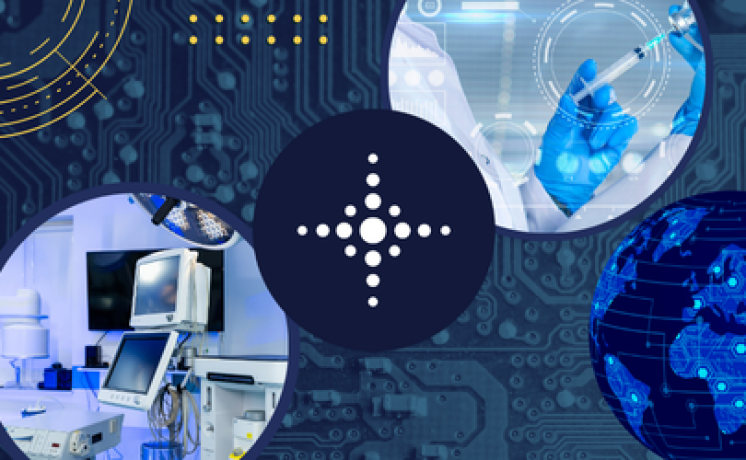Explore various ways that artificial intelligence helps to ensure that a signatory is who they claim to be.
With sensitive data and strict regulatory requirements, the life sciences industry faces unique challenges in document authentication. That’s why the security of electronic signatures (eSignatures) is vitally important. Thanks to artificial intelligence (AI) and how it’s revolutionizing eSignature security, it’s easier than ever to detect fraudulent activities and prevent unauthorized access or post–signing data manipulation in the approval process and business operations.
Methods and Technologies for eSignature Security
Explore ways that technologies like AI and machine learning, biometric authentication (face and voice recognition), and fraud detection algorithms provide robust solutions to eSignature challenges. We’ll delve into AI and AI-powered security measures and their implications for IT and regulatory affairs professionals.
AI, machine learning, and natural language processing
AI and machine learning algorithms excel at recognizing patterns. That holds true when they’re used to validate eSignatures, particularly when a stylus is used. Advanced verification algorithms learn from datasets that help them adapt to a signatory’s individual signing style and ensure that the process is seamless and secure. And because the algorithms learn from historical patterns, they recognize changes in a person’s signature over time.
Machine learning simplifies risk management in eSignatures by identifying anomalies and potential fraud. Real-time analysis detects suspicious activities like unauthorized access or fraudulent transactions and flags them for review.
To simplify the document review process and help reviewers quickly understand the document’s content, AI-powered natural language processing (NLP) algorithms analyze the content of documents and extract key information.
Biometric authentication
A facial recognition system verifies a person’s identity by analyzing and comparing patterns in their facial features. The technology uses algorithms that map and analyze facial characteristics like the distance between a person’s eyes, the shape of their nose, and the angle of their jawline. Voice recognition converts analog audio to a digital signal, which is used to identify patterns in a person’s speech.
Common applications of facial and voice recognition technology involve security. For example, smartphones use facial recognition to unlock devices. Law enforcement agencies use it to identify individuals in criminal investigations. Social media platforms use it to automatically tag others in photos.
In the case of eSignatures, a digital certificate with the signer’s identity information is paired with a facial recognition image and/or a digital signal of their voice (their biometric signature). Together, they provide a secure way to authenticate the user and validate the digital transaction.
Facial and voice recognition have many benefits, but ethical and privacy considerations underscore the importance of responsible implementation. IT and regulatory affairs professionals must comply with regulatory requirements for informed consent and data privacy. They also need to assess and mitigate risks like potential biases in algorithms and security vulnerabilities.
Fraud detection algorithms
Fraud detection algorithms use AI and machine learning techniques to analyze patterns, anomalies, and trends within data. Algorithms can be trained from historical data to distinguish between legitimate and fraudulent activities and adapt to new tactics employed by bad actors.
You may already be familiar with fraud detection algorithms for credit card transactions. The algorithms consider your typical geographic locations and transaction frequencies to spot deviations from your normal spending patterns. A surge in transactions in unfamiliar locations prompts further investigation (and an alert for you) from the credit card company.
Fraud detection algorithms for eSignatures scrutinize the timing, sequence, and biometric characteristics of the signature during the signing process. When signing with a stylus, for example, the algorithms distinguish between genuine signatures and attempts at forgery by pinpointing irregularities in the speed or pressure applied during the signing process. Similarly, if the signature shows a significant deviation from the signer’s established patterns, the algorithm triggers additional verification steps.
To help maintain secure and compliant systems, IT professionals use fraud detection algorithms to identify potential threats before they do any damage. Plus, the algorithms continuously monitor transactions, user activity, and data integrity to help maintain compliance. It’s a proactive approach that enables IT and regulatory affairs professionals to toe the line with compliance, security, and ethical business practices.
Keystroke patterns
Who knew you could be identified by your keystroke patterns! It’s true. Your unique rhythm and timing of typing on a keyboard is determined by factors like finger length, muscle memory, and typing habits. It’s an interesting perspective on the user experience and “digital fingerprints.”
IT professionals appreciate that keystroke patterns significantly reduce the risk of unauthorized access to eSignature documents. Where passwords and personal identification numbers (PINs) can easily be hacked, keystroke patterns may be the new “long, random, and unique” passwords. When paired with biometric authentication like face or voice recognition, keystroke patterns create a robust multi-factor authentication system.
And that’s how eSignatures benefit from keystroke patterns. By knowing how a person types, eSignature systems create a unique digital signature for each user and ensure the person behind the keyboard is indeed the authorized individual. To the relief of regulatory affairs professionals, it contributes to compliance efforts to restrict access and authenticate users with a high degree of confidence.
Encryption techniques
A component of cybersecurity, encryption is the process of converting data into code that is deciphered only by individuals with the decryption key. Symmetric encryption uses a single key for both encryption and decryption. Asymmetric encryption uses a public key for encryption and a private key for decryption, which adds an extra layer of security.
Encryption techniques are used by various applications to ensure confidentiality and data integrity. For example, messaging platforms employ end-to-end encryption for secure communication so that only the intended recipient can decipher the messages. Financial institutions rely on encryption to protect banking information during online transactions. Encryption techniques for data storage help to secure files and folders.
Encryption applied to an eSignature ensures that it’s tamper-proof and uniquely tied to the signer. It provides a secure way to verify the origin and integrity of a document. Whether contracts, agreements, or official documents, encryption safeguards against forgery and unauthorized alterations.
IT professionals use encryption techniques to protect data at rest, in transit, and in use. Their challenge is to select and implement the appropriate encryption techniques and manage updates to stay ahead of emerging threats. Regulatory affairs professionals must ensure that encryption techniques align with regulatory requirements like the General Data Protection Regulation (GDPR).
Explore best practices for security and data integrity—download the Enhancing Security and Ensuring Data Integrity in eSignature Solutions white paper
How USDM Can Help
USDM Life Sciences implements AI and other advanced technologies to streamline workflows and maximize the security of eSignatures. We ensure that AI and machine learning algorithms for verification are compliant and can be defended during a regulatory audit.
Using the USDM Cloud Assurance managed service, we support IT and Regulatory departments with the continuous compliance of AI-driven eSignature solutions. We ensure that AI-enhanced Software-as-a-Service (SaaS) solutions adapt to changes in technology and remain compliant with regulatory standards, including compliance with informed consent and data privacy regulations.
Furthermore, USDM helps life sciences organizations implement robust encryption techniques to ensure eSignatures are tamper-proof and remain confidential. This includes selecting encryption methods that protect data integrity and comply with regulations like GDPR and the California Consumer Privacy Act (CCPA).
How do we do it?
We assess vendor software and quality management system maturity. After we identify and remediate technical, process, personnel, or regulatory gaps, we help your organization leverage vendor activities to significantly reduce your compliance and maintenance burden.
USDM is well-versed in best practices for security and data integrity in eSignature solutions. Our top-notch talent has vast experience in the life sciences industry and they’re ready to help you develop strategies that align with your needs. Contact us to get started today.




